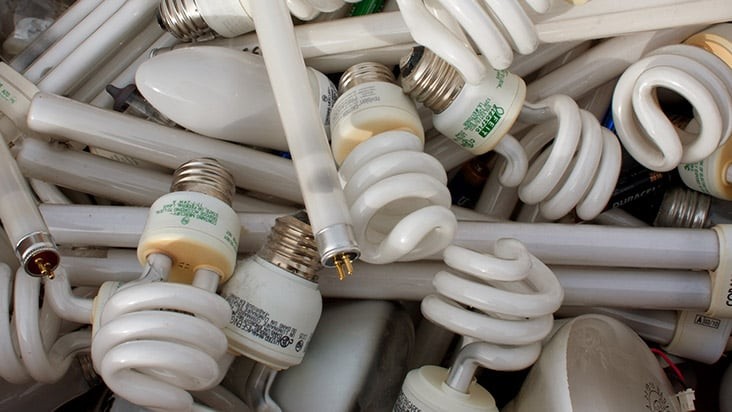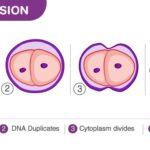Compact fluorescent lamps, also known as CFLs, are energy-efficient alternatives to incandescent bulbs, and at WHAT.EDU.VN, we’re here to illuminate everything you need to know about them. CFLs use less energy and last longer, making them a smart choice for your home or business. Curious about their benefits or how they compare to LEDs? Keep reading to uncover the world of energy-saving light bulbs, fluorescent technology, and lighting solutions.
1. What Are Compact Fluorescent Lamps (CFLs)?
Compact Fluorescent Lamps (CFLs) are designed as energy-saving replacements for incandescent bulbs. Instead of a long tube, CFLs use a spiral shape to fit into standard medium base sockets. Many also have built-in ballasts, unlike older fluorescent tubes. These lamps are part of the fluorescent lamp family, offering a twist on traditional fluorescent technology. This design makes them “compact” and efficient for various lighting applications.
2. How Do Compact Fluorescent Bulbs Work?
Compact fluorescent bulbs operate using the same technology as linear fluorescents. The process inside a linear tube also occurs inside a compact fluorescent tube. When electricity flows through the bulb, it excites mercury vapor, producing ultraviolet (UV) light. This UV light then strikes a phosphor coating on the inside of the bulb, which emits visible light. This technology allows CFLs to produce more light using less energy than incandescent bulbs.
While linear fluorescents were invented in the early 1900s, CFLs didn’t emerge until around 1960. The challenge was creating a smaller, more compact ballast that could be integrated with the lamp itself.
 Compact Fluorescent Lamp Components
Compact Fluorescent Lamp Components
3. Do CFLs Need A Ballast?
Yes, CFLs need a ballast to operate correctly. The ballast regulates the voltage and current supplied to the bulb, ensuring it functions safely and efficiently. There are two main types of CFLs, each with different ballast configurations:
3.1. Non-Integrated Ballast CFLs
Non-integrated ballast CFLs, often called “plug-in” CFLs, require a separate ballast that is installed in the light fixture. The ballast is purchased separately from the lamp. This setup is similar to linear fluorescents but on a smaller scale.
3.2. Integrated Or Self-Ballasted CFLs
Integrated ballast CFLs are designed to directly replace incandescent and halogen lamps. These CFLs have a ballast built into the base of the bulb, allowing them to be screwed into standard medium base sockets without needing an external ballast.
4. Where Can You Use CFL Bulbs?
CFL bulbs are versatile and can be used in various settings. The most common reason for using them is to save energy. While they may not be ideal for decorative fixtures like vintage chandeliers, here are some typical applications:
4.1. Recessed Cans
Recessed cans are used in both hospitality and residential settings. It’s common to see 2700K CFLs used in these cans because the lamp itself isn’t exposed, while still saving energy and creating a warm atmosphere.
4.2. Concealed Fixtures
Many property managers use CFLs in fixtures that conceal the bulb to avoid aesthetic issues. Older apartment complexes often have CFLs in kitchen fixtures or bathroom mirror lights, hidden from direct view.
5. What Are The Pros And Cons Of Compact Fluorescent Lamps?
Like any lighting technology, CFLs have their advantages and disadvantages. Here’s a balanced look at the pros and cons:
5.1. CFL Pros
-
Energy Efficiency: Retrofitting from incandescent to CFLs can result in approximately 40 percent savings on your energy bill.
-
Variety of Color Temperatures: CFLs are available in a range of color temperatures, up to 6500K, suitable for spaces needing cool light, like hospitals or airports.
5.2. CFL Cons
-
Color Shifting: Like linear fluorescents, CFLs can shift color over time.
-
Harsh Light: The light produced by CFLs can sometimes be harsh and less comfortable for the eyes.
-
Warm-Up Period: CFLs typically require a warm-up period of 10-30 seconds to reach their maximum brightness.
-
Recycling Cost: CFLs contain mercury and require proper recycling, which can involve additional costs and effort.
6. CFLs Vs. LEDs: A Quick Comparison
Here’s a comparison between CFLs and LEDs based on average household lamps:
| Comparison Point | CFL | LED |
|---|---|---|
| Average Cost | $2.25 | $5.00 |
| Lumens (Light Output) | 780 | 780 |
| Wattage (Energy Usage) | 10 | 5 |
| Lumens Per Watt | 78 | 156 |
| Average Lifespan (Hours) | 10,000 | 25,000 |
7. Are CFLs Safe?
CFLs contain a small amount of mercury, which is a neurotoxin. The amount is so small that if a bulb breaks, it doesn’t pose a health risk unless you handle it incorrectly.
How to handle a broken CFL:
- Open windows and ventilate the area for at least 15 minutes.
- Do not use a vacuum cleaner, as it can spread mercury vapor.
- Use stiff paper or cardboard to collect the broken pieces and place them in a sealed container.
- Wipe the area with a damp paper towel and add it to the container.
- Dispose of the sealed container at a local recycling center or hazardous waste facility.
8. How Do You Dispose Of CFL Bulbs?
Because CFL bulbs contain mercury, it’s crucial to dispose of them properly. Never throw CFLs in the regular trash. Instead, take them to a recycling center or a hazardous waste collection site. Many retailers, like hardware stores and supermarkets, also offer CFL recycling programs. Contact your local waste management authority for specific instructions and locations.
9. What Are The Different Types Of CFL Bulbs?
CFL bulbs come in various shapes and sizes to fit different lighting fixtures. Here are some common types:
9.1. Spiral CFL Bulbs
Spiral CFL bulbs are the most common type. They feature a coiled tube that maximizes light output in a compact size. These bulbs are suitable for general lighting purposes.
9.2. Tube CFL Bulbs
Tube CFL bulbs come in straight or U-shaped designs. They are often used in fixtures designed for linear fluorescent tubes but can also be found in compact sizes for smaller fixtures.
9.3. Globe CFL Bulbs
Globe CFL bulbs have a round shape similar to traditional incandescent bulbs. They are often used in decorative fixtures and vanity lights.
9.4. Reflector CFL Bulbs
Reflector CFL bulbs have a reflective coating that directs light in a specific direction. They are ideal for task lighting and spotlighting applications.
10. What Are The Common Issues With CFL Bulbs?
While CFL bulbs are energy-efficient, they can sometimes have issues. Here are a few common problems:
- Flickering: CFL bulbs may flicker, especially when they are old or not compatible with the fixture.
- Buzzing: Some CFL bulbs produce a buzzing sound, which can be annoying.
- Long Start Time: CFL bulbs may take a while to reach full brightness, which can be inconvenient.
- Light Output Diminishes Over Time: The light output of CFL bulbs may decrease over time, requiring replacement.
11. What Is The Lifespan Of A CFL Bulb?
CFL bulbs typically last much longer than incandescent bulbs. On average, a CFL bulb can last between 8,000 to 15,000 hours. This lifespan depends on usage patterns, the quality of the bulb, and environmental factors. Regularly turning CFL bulbs on and off can shorten their lifespan.
12. How Do CFLs Affect The Environment?
CFLs have both positive and negative impacts on the environment. On the positive side, they reduce energy consumption, leading to lower greenhouse gas emissions from power plants. However, CFLs contain mercury, a hazardous substance. Proper disposal is essential to prevent mercury from contaminating the environment.
13. How To Choose The Right CFL Bulb?
Choosing the right CFL bulb involves considering several factors:
- Brightness (Lumens): Determine the appropriate brightness level for the space you want to light.
- Color Temperature (Kelvin): Choose a color temperature that suits the ambiance you want to create (e.g., warm white for living rooms, cool white for offices).
- Shape and Size: Select a bulb that fits the fixture and meets your aesthetic preferences.
- Energy Efficiency (Wattage): Look for bulbs with low wattage to maximize energy savings.
14. Can CFL Bulbs Be Used Outdoors?
Yes, some CFL bulbs are designed for outdoor use. However, it’s essential to choose bulbs specifically labeled for outdoor applications. These bulbs are designed to withstand temperature fluctuations and moisture. Using indoor CFL bulbs outdoors can shorten their lifespan and pose safety risks.
15. What Is The Cost Of Operating CFL Bulbs?
The cost of operating CFL bulbs is generally lower than incandescent bulbs due to their energy efficiency. The exact cost depends on the wattage of the bulb, the local electricity rate, and the number of hours the bulb is used. You can calculate the operating cost by multiplying the wattage by the electricity rate and the usage hours.
16. What Are The Alternatives To CFL Bulbs?
There are several alternatives to CFL bulbs, including:
- LED Bulbs: LEDs are highly energy-efficient and long-lasting.
- Halogen Bulbs: Halogen bulbs are similar to incandescent bulbs but more energy-efficient.
- Incandescent Bulbs: Traditional incandescent bulbs are less energy-efficient and have a shorter lifespan.
17. How Do You Troubleshoot CFL Bulb Problems?
If you encounter problems with CFL bulbs, here are a few troubleshooting tips:
- Check the Bulb’s Connection: Ensure the bulb is securely screwed into the fixture.
- Replace the Bulb: If the bulb is old or damaged, try replacing it with a new one.
- Check the Ballast: If the bulb has a separate ballast, make sure it is functioning correctly.
- Consult an Electrician: If you are unsure about the problem, consult a qualified electrician.
18. Are There Any Health Concerns Associated With CFL Bulbs?
The primary health concern associated with CFL bulbs is the presence of mercury. Mercury is a neurotoxin that can pose health risks if released into the environment. However, the amount of mercury in CFL bulbs is relatively small, and the risk is minimal if the bulbs are handled and disposed of properly.
19. What Certifications Should You Look For When Buying CFL Bulbs?
When buying CFL bulbs, look for certifications such as:
- Energy Star: Energy Star certified CFL bulbs meet strict energy efficiency and performance standards.
- UL (Underwriters Laboratories): UL certification indicates that the bulb has been tested for safety.
- RoHS (Restriction of Hazardous Substances): RoHS compliance means the bulb contains minimal hazardous substances.
20. How Can I Maximize The Lifespan Of My CFL Bulbs?
To maximize the lifespan of your CFL bulbs, follow these tips:
- Avoid Frequent On/Off Switching: Frequent switching can shorten the lifespan of CFL bulbs.
- Use Dimmers Sparingly: Dimmers can reduce the lifespan of CFL bulbs, so use them sparingly.
- Protect From Extreme Temperatures: Extreme temperatures can damage CFL bulbs, so protect them from heat and cold.
- Handle With Care: Handle CFL bulbs gently to avoid damage.
21. What Are The Different Color Temperatures Of CFL Bulbs?
CFL bulbs come in a variety of color temperatures, measured in Kelvin (K). Here are some common color temperatures:
- 2700K (Warm White): Provides a warm, cozy light suitable for living rooms and bedrooms.
- 3000K (Soft White): Offers a slightly brighter, more neutral light.
- 3500K (Neutral White): Provides a balanced light suitable for kitchens and offices.
- 4100K (Cool White): Offers a bright, clean light suitable for task lighting.
- 5000K-6500K (Daylight): Provides a bright, energizing light similar to natural daylight.
22. What Is The Difference Between CFLs And Halogen Bulbs?
CFLs and halogen bulbs differ in several ways:
- Energy Efficiency: CFLs are more energy-efficient than halogen bulbs.
- Lifespan: CFLs typically have a longer lifespan than halogen bulbs.
- Mercury Content: CFLs contain mercury, while halogen bulbs do not.
- Light Quality: Halogen bulbs generally provide a brighter, more natural light than CFLs.
23. Are CFL Bulbs Dimmable?
Some CFL bulbs are dimmable, but not all. It’s essential to choose CFL bulbs specifically labeled as dimmable and use them with compatible dimmers. Using non-dimmable CFL bulbs with dimmers can cause flickering, buzzing, and reduced lifespan.
24. How Do CFLs Compare To Incandescent Bulbs In Terms Of Light Quality?
CFLs and incandescent bulbs differ in light quality:
- Color Rendering Index (CRI): Incandescent bulbs typically have a higher CRI, meaning they render colors more accurately.
- Light Distribution: Incandescent bulbs emit light in all directions, while CFLs may have a more focused light distribution.
- Warm-Up Time: Incandescent bulbs reach full brightness instantly, while CFLs may take a few seconds to warm up.
25. What Is The Impact Of Government Regulations On CFL Bulbs?
Government regulations have significantly impacted the CFL bulb market:
- Energy Efficiency Standards: Regulations have encouraged the adoption of more energy-efficient lighting technologies, like CFLs.
- Phased Out Incandescent Bulbs: Many countries have phased out or restricted the sale of traditional incandescent bulbs, promoting CFLs and LEDs.
- Mercury Regulations: Regulations govern the amount of mercury allowed in CFL bulbs and mandate proper disposal methods.
26. How Do You Choose The Right Wattage For A CFL Bulb?
Choosing the right wattage for a CFL bulb depends on the amount of light you need. Here’s a general guide:
- 40-Watt Incandescent Equivalent: Use a 9-13 Watt CFL bulb.
- 60-Watt Incandescent Equivalent: Use a 13-15 Watt CFL bulb.
- 75-Watt Incandescent Equivalent: Use a 18-20 Watt CFL bulb.
- 100-Watt Incandescent Equivalent: Use a 23-30 Watt CFL bulb.
27. Can CFL Bulbs Be Used In Enclosed Fixtures?
Some CFL bulbs can be used in enclosed fixtures, but it’s essential to choose bulbs specifically designed for this purpose. Enclosed fixtures can trap heat, which can shorten the lifespan of CFL bulbs. Look for CFL bulbs labeled as “suitable for enclosed fixtures.”
28. How Do CFL Bulbs Perform In Cold Temperatures?
CFL bulbs may perform less efficiently in cold temperatures. They may take longer to warm up and produce less light. Some CFL bulbs are designed to perform better in cold temperatures, so choose these for outdoor or unheated spaces.
29. What Is The Importance Of Lumens When Selecting A CFL Bulb?
Lumens measure the brightness of a light bulb. When selecting a CFL bulb, consider the lumens to ensure you get the desired level of light:
- Low Light (e.g., Night Lights): 200-400 Lumens
- Task Lighting (e.g., Reading Lamps): 400-800 Lumens
- General Lighting (e.g., Living Rooms): 800-1600 Lumens
- Bright Lighting (e.g., Offices): 1600-2000 Lumens
30. How Do I Clean A CFL Bulb?
To clean a CFL bulb, follow these steps:
- Turn Off and Unplug: Turn off the light fixture and unplug it from the power source.
- Allow to Cool: Let the bulb cool down completely.
- Wipe with a Dry Cloth: Wipe the bulb with a clean, dry cloth to remove dust and dirt.
- Avoid Water: Do not use water or cleaning solutions, as they can damage the bulb.
31. What Are The Safety Precautions To Take When Using CFL Bulbs?
When using CFL bulbs, take these safety precautions:
- Handle with Care: Handle CFL bulbs gently to avoid breakage.
- Avoid Over-Tightening: Do not over-tighten the bulb when screwing it into the fixture.
- Use Correct Voltage: Use CFL bulbs with the correct voltage for your electrical system.
- Keep Away from Water: Keep CFL bulbs away from water and moisture.
32. How Does The Cost Of CFL Bulbs Compare To Other Lighting Options Over Time?
The initial cost of CFL bulbs is higher than incandescent bulbs, but they are more cost-effective over time due to their energy efficiency and longer lifespan. While LED bulbs have a higher upfront cost, they offer even greater energy savings and longevity.
33. What Are The Latest Innovations In CFL Bulb Technology?
Recent innovations in CFL bulb technology include:
- Improved Light Quality: Manufacturers are working to improve the light quality of CFL bulbs, making them more comfortable for the eyes.
- Enhanced Dimming Capabilities: New CFL bulbs offer better dimming performance and compatibility with a wider range of dimmers.
- Reduced Mercury Content: Manufacturers are reducing the amount of mercury in CFL bulbs to minimize environmental impact.
34. How Do CFL Bulbs Contribute To Energy Conservation?
CFL bulbs contribute significantly to energy conservation:
- Reduced Energy Consumption: CFLs use up to 75% less energy than incandescent bulbs.
- Lower Electricity Bills: By using less energy, CFLs can help reduce your electricity bills.
- Decreased Greenhouse Gas Emissions: Lower energy consumption leads to reduced greenhouse gas emissions from power plants.
35. What Should I Do If A CFL Bulb Breaks?
If a CFL bulb breaks, follow these steps:
- Ventilate the Area: Open windows and ventilate the area for at least 15 minutes.
- Do Not Vacuum: Do not use a vacuum cleaner, as it can spread mercury vapor.
- Collect the Pieces: Use stiff paper or cardboard to collect the broken pieces and place them in a sealed container.
- Wipe the Area: Wipe the area with a damp paper towel and add it to the container.
- Dispose Properly: Dispose of the sealed container at a local recycling center or hazardous waste facility.
36. How Do CFLs Perform In High Humidity Environments?
CFLs can perform well in high humidity environments, but it’s important to choose bulbs specifically designed for these conditions. Look for CFL bulbs labeled as “suitable for damp locations.”
37. What Is The Role Of The Ballast In A CFL Bulb?
The ballast in a CFL bulb regulates the voltage and current supplied to the bulb. It ensures the bulb functions safely and efficiently, preventing it from drawing too much power and overheating.
38. How Do I Know If A CFL Bulb Is Failing?
Signs that a CFL bulb is failing include:
- Dimming: The bulb becomes dimmer than usual.
- Flickering: The bulb flickers frequently.
- Color Shift: The color of the light changes.
- Long Start Time: The bulb takes longer than usual to reach full brightness.
39. What Are The Potential Long-Term Savings Of Using CFL Bulbs?
The potential long-term savings of using CFL bulbs can be significant:
- Reduced Energy Costs: CFLs use less energy, resulting in lower electricity bills.
- Fewer Replacements: CFLs have a longer lifespan, so you won’t need to replace them as often.
- Lower Maintenance Costs: Fewer replacements mean lower maintenance costs.
40. How Do I Choose The Right Size CFL Bulb For My Fixture?
To choose the right size CFL bulb for your fixture, consider:
- Fixture Type: Match the bulb size to the fixture type (e.g., recessed can, table lamp).
- Socket Size: Ensure the bulb base fits the socket size (e.g., medium base, candelabra base).
- Wattage Equivalent: Choose a CFL bulb with a wattage equivalent to the incandescent bulb you are replacing.
41. Are There Any Tax Incentives Or Rebates For Using CFL Bulbs?
Some regions offer tax incentives or rebates for using energy-efficient lighting, including CFL bulbs. Check with your local government or utility company for available programs.
42. How Do I Dispose Of A Large Number Of CFL Bulbs?
To dispose of a large number of CFL bulbs, contact your local waste management authority or a specialized recycling service. They can provide guidance on proper disposal methods and collection options.
43. What Are The Advantages Of Using CFL Bulbs In Commercial Settings?
The advantages of using CFL bulbs in commercial settings include:
- Reduced Energy Costs: CFLs can significantly lower energy costs in large buildings.
- Longer Lifespan: CFLs reduce the need for frequent replacements, saving on maintenance costs.
- Lower Cooling Costs: CFLs produce less heat, which can lower cooling costs in air-conditioned buildings.
44. How Do I Test A CFL Bulb To See If It Is Working?
To test a CFL bulb, screw it into a working fixture and turn on the light. If the bulb lights up, it is working. If it doesn’t light up, try replacing it with a new bulb to rule out a fixture problem.
45. What Is The Environmental Impact Of Manufacturing CFL Bulbs?
The manufacturing of CFL bulbs has an environmental impact due to:
- Energy Consumption: The manufacturing process requires energy.
- Material Use: CFLs contain materials like glass, metal, and mercury.
- Waste Generation: Manufacturing generates waste materials that need to be disposed of properly.
46. How Can I Reduce The Environmental Impact Of Using CFL Bulbs?
To reduce the environmental impact of using CFL bulbs:
- Choose Energy Star Certified Bulbs: These bulbs are more energy-efficient and environmentally friendly.
- Dispose Properly: Recycle CFL bulbs at a local recycling center or hazardous waste facility.
- Use Sparingly: Use CFL bulbs only when needed and turn them off when you leave a room.
47. What Are The Different Shapes And Sizes Of CFL Bulbs Available?
CFL bulbs are available in various shapes and sizes, including:
- Spiral: The most common shape, offering a compact design.
- Tube: Straight or U-shaped tubes for linear fixtures.
- Globe: Round shape similar to traditional incandescent bulbs.
- Reflector: Designed to direct light in a specific direction.
48. How Do I Store CFL Bulbs Safely?
To store CFL bulbs safely:
- Keep In Original Packaging: Store bulbs in their original packaging to protect them from damage.
- Store In A Cool, Dry Place: Avoid storing bulbs in areas with extreme temperatures or humidity.
- Handle Carefully: Handle bulbs gently to prevent breakage.
49. What Is The Expected Energy Savings When Switching From Incandescent To CFL Bulbs?
Switching from incandescent to CFL bulbs can result in energy savings of up to 75%. This means you’ll use significantly less electricity, lowering your energy bills and reducing your carbon footprint.
50. How Do I Recycle CFL Bulbs In My Area?
To recycle CFL bulbs in your area:
- Check Local Recycling Centers: Contact your local recycling centers to see if they accept CFL bulbs.
- Visit Hardware Stores: Many hardware stores offer CFL recycling programs.
- Contact Waste Management Authority: Contact your local waste management authority for disposal options.
Do you have more questions about CFL bulbs or other lighting solutions? At WHAT.EDU.VN, we’re here to provide the answers you need. Our platform offers free access to expert knowledge and advice. Contact us today at 888 Question City Plaza, Seattle, WA 98101, United States, or reach out via WhatsApp at +1 (206) 555-7890. Visit our website at WHAT.EDU.VN and ask your questions for free. Let us help you illuminate your world with the right information and solutions!
We understand the challenges of finding quick, reliable answers and the frustration of not knowing where to turn. That’s why WHAT.EDU.VN is dedicated to providing a user-friendly platform where you can ask any question and receive timely, accurate responses from knowledgeable individuals. Don’t let your curiosity wait—visit what.edu.vn now and experience the ease and convenience of having your questions answered for free!


